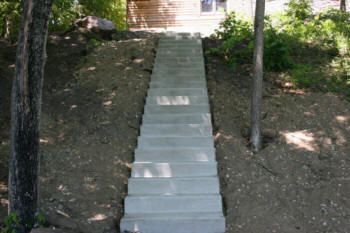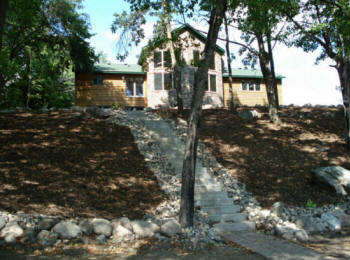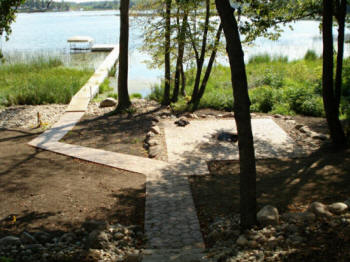"Q. How do you offer so many Services?
A. We are a Company of Contractors-Tradesmen & Designers,"
~Concrete Contractor~

Our Concrete Services offers the best choices for your pool, sidewalk, deck, patio, porch, or driveway! Pour Lay Stamped Stained Concrete Driveway/Patio.
Residential & Commercial
Are you looking for a dependable concrete contractor for a general concrete project?
Would you like to customize your residential or commercial property with color concrete?
Our Concrete Services is exactly what you need. Locally owned and operated, we have the skills and knowledge you can depend on for quality concrete services. With our years of experience and colors, we have exactly what you want, and we can get the job done quickly and efficiently, no matter how simple or complex. From stained and stamped concrete to colored concrete, Our Concrete Services offers the best choices for your pool, sidewalk, deck, patio, porch, or driveway!
Your complete concrete specialty company. When you have construction that calls for the services of a contractor, consider Designer Properties. We specialize in all aspects of concrete construction from commercial, slip-forming, gang forming, tilt-up construction, poured walls, footings, foundations, site concrete, residential poured wall basements, decorative concrete, driveways stamping or acid staining.
Installation Gallery



~Gallery~
Stamped Concrete
Stamped concrete has become one of the most popular methods to enhance
landscapes and buildings. A rapidly growing number of homeowners, businesses and
municipalities are becoming inspired by the versatility of stamped concrete and
the wide array of patterns and colors available.
This process involves "stamping" or "impressing" three dimensional patterns into
colored concrete with special stamping tools or molds.
When the stamping is complete, the product is then sealed, highlighting the
colors and providing greater stain and weather resistance. The result is a
surface that combines the beauty of masonry with the durability of concrete.
Acid-Stained Concrete
Concrete Countertops
Today you'll find colorful concrete used as counters, sinks, bathtubs,
furniture, fireplace surrounds, and floors.
Homeowners literally have an unlimited number of color choices to choose from,
allowing them to coordinate a surface with other colors and materials in a room.
In general performance and cost, concrete competes with both solid-surface
synthetics (such as Corian and Avonite) and stone (granite, marble, and
limestone), but is not as limited on color, thickness or natural patterning.
Synthetic surfaces are sold in sheet form, stone in slabs and tiles, and both
are limited to standard thicknesses. But because concrete is cast in molds, it
can include subtle texturing, decorative objects (such as pieces of metal,
fossils, glass, or even coins), changes of contour, and greater thickness; it
can even form integrally cast sinks of almost unlimited shape.
Concrete contains natural materials - stone, silica-based cement, and water.
Like stone but unlike synthetic products, concrete requires careful maintenance,
and even when it's properly sealed, its surface can show stains and wear over
time. (Whether that patina is desirable or not depends on your taste.)
Concrete Costs
None of these materials are inexpensive. On a square-foot basis, the entry-level
cost for a standard-width counter runs about $50 for solid surface, $55 to $65
for concrete, and $65 or more for granite.Costs go up from there for more
complex edge details, custom-aggregate mixes, cutouts for sinks, holes for
faucets, and curving backsplashes. Installation charges vary with the complexity
of the job.
Concrete Caveats
Concrete is not bulletproof," says one fabricator. Although a concrete counter
might contain expanded metal lath, a reinforcing bar, or strands of fiberglass
or polypropylene to strengthen it, cracks may appear. They can be filled with
polyester-based resins colored to match the mix.
Don't leave acidic liquids - citrus juices, wines, vinegar, and alcohol - on
unsealed concrete, since they can etch into the surface. Also, oil and fat can
soak in.
Consider having raised strips of metal cast into countertops (like runners) to
support pots and pans in areas of high use (such as near sinks or cooking
surfaces). These strips can help protect against abrasion.
Do not use abrasive pads or powders on sealed counters. Clean with warm water
and a non ammoniated, nonabrasive cleanser when not using a stone soap.
Do not place hot objects or adhesive tapes on the waxed surface - they could
cause the surface to become discolored.
Acid Stain is not a paint or coating agent, rather, it's a coloring process
involving a chemical reaction on a cementitious material. A solution made with
water, acid and inorganic salts reacts with minerals already present in the
concrete, the result of this reaction is permanant and lasting color.
Acid Stain transforms an ordinary concrete slab into a luxurious floor that
resembles marble or glazed stone. When the concrete is stained and scored, we
can create the appearance of expensive flooring at a fraction of the cost.
Unlike paint, Acid-Stain reacts with the minerals present in the concrete giving
it the look and feel of natural stone.
It works very well on new or old concrete, and we can create impressive results
with decorative polymer overlays. Acid Stain is a very durable product if
properly protected with sealer or wax, and it can be applied to both interiors
and exteriors.
What makes Acid Stain so attractive? Acid Stain gives concrete a mottled,
variegated, marble like look. It creates beautiful colors on concrete, mostly
earth tone browns, reddish browns and greens. You can also create your own
shades by mixing and matching your available colors, or applying them at
different rates. Never expect Acid Stain to be uniform or have an even tone,
you'll get different reactions from slab to slab, and even on the same job you
may see different coloration patterns.
Acid Stain can be applied to loft spaces, walks, entrances, driveways, living
rooms, bathrooms, patios, high traffic areas and even vertically to any
cementitious surface
Is your concrete stainable?
Not every concrete floor is eligible for Acid Stain, though age is not an issue,
the shape it's in is. A smooth concrete surface will yield more attractive
results than an old worn one. If the concrete is spalled, the aggregate is
exposed or has previously been acid etched, the stain may not "take in" and will
not look as desired because the aggregate does not react with the stain, only
materials in the concrete paste do. On some applications where the surface is
textured, as in stamped concrete or stamped stained, Acid Stain provides even
more depth of color, larger selection and realistic look to the surface.
How we Prepare:
Preparations for Acid Staining will depend on the condition of the slab, on new
concrete the only thing needed is to allow time for curing, and some rinsing and
scrubbing to remove laitance. For old concrete, a thorough cleaning is
necessary; any dirt, grease, paint, sealer or curing agent will prevent the
stain from penetrating and reacting.
Is your concrete sealed?
In the event that your existing concrete is sealed or was cured with a
penetrating curing agent, we would have to lightly grind or sand the surface to
prepare for the staining process.
It is always a good idea to do a small test area first. So before applying,
preparation and thorough planning the job is a good starting point.
A good test is to drop some water on the floor and see if the floor is absorbent
or if it just beads off.
Overlays
Polymer cement overlay is a combination of cement, various aggregates and
proprietary hybrid polymer resins. The purpose of adding polymer resins to the
cement and aggregate is to greatly increase the performance characteristics and
versatility of conventional cement and concrete materials.
Unlike conventional cement and concrete mixes, polymer cement overlays can be
applied as thin as a single grain of sand or up to several inches thick without
fear of delamination or typical product failure. In addition, polymer cement
overlays are much more resistant to damage from salt, petrochemicals, UV, harsh
weather conditions and traffic wearing.
Polymer cement overlays were introduced over twenty years ago, intended for use
as a thin surface restoration material for concrete substrates. With years of
successful and permanent applications, polymer cement overlays were introduced
into to architectural concrete and commercial flooring industry in the early
80’s where it’s use has become an industry norm. To this day, polymer cement
overlays are used for interior and exterior applications ranging from:
Concrete Resurfacing
Designed to restore and protect damaged, pitted, flaking and stained concrete
back to the look of a new concrete surface. This application can even be "broom
finished" if desired.
Regrading
Offers to ability to effectively repair and level concrete surfaces that have
settled and become unsafe trip hazards. Regrading from several inches thick down
to a feathered edge is possible.
Stamped overlays
Similar to conventional stamped concrete, but only ¼" to ½" thick applied over
existing concrete or wood substrate of any condition and at a fraction of
hassle, cost and application time. The finished look is that of truly authentic
tile, brick, slate, stone, wood plank and more.
Stained overlays
Quickly becoming the commercial flooring industries most demanded and specified
finish. A thin layer of polymer cement is applied over existing concrete or wood
substrates and chemically stained with single or multiple translucent colors for
a natural looking, elegant and durable flooring system. Optional patterns are
often installed with cove type strips, similar to those used in terrazzo
flooring.
Splatter or knockdown
The standard for commercial and residential pool deck finishes. Polymer cement
is applied to the existing concrete substrate in a moderately textured finish
(average of 1/8" thickness) in various patterns. Often times, the texture is
knocked down with a trowel to slightly modify the appearance and feel of the
finished application.
Decorative Scoring:
You can go from a simple design to a very sophisticated project. The
more complicated your design, the more labor intensive it will become,
but the end results are simply stunning. We specialize scoring custom
and elaborate geometric patterns into acid-stained floors.
Protective Sealing:
After the Acid Stain is applied, the floor should be sealed and or waxed
to protect the stain and add shine and depth.
The Local Near Me Concrete Contractors has been growing very rapidly for
the last few years, and Acid Stain has been a big part of this growth.
More homeowners, architecs and designers are asking for it.
Some of the most common pattern choices include but are not limited to:
slate, brick, granite, cobblestone, tile, flagstone, seamless texture,
and more. It is also a common practice to use multiple patterns and
colors together with custom bandwork, edges, and centerpieces.
Like all forms of decorative concrete workmanship, the design choices
are only limited by your design tastes and your concrete contractors
skillset.
See how we do it
See some of our work
In recent years, another popular technique of imprinting concrete to
achieve the faux masonry effect is stenciled concrete.
Stamped Floor/Patio Concrete Contractors Overlay FREE Quote ➨ Stained Concrete Contractors Stamped Concrete Driveways Pour Stamped Concrete Patio Stamped Concrete Garage Floor



